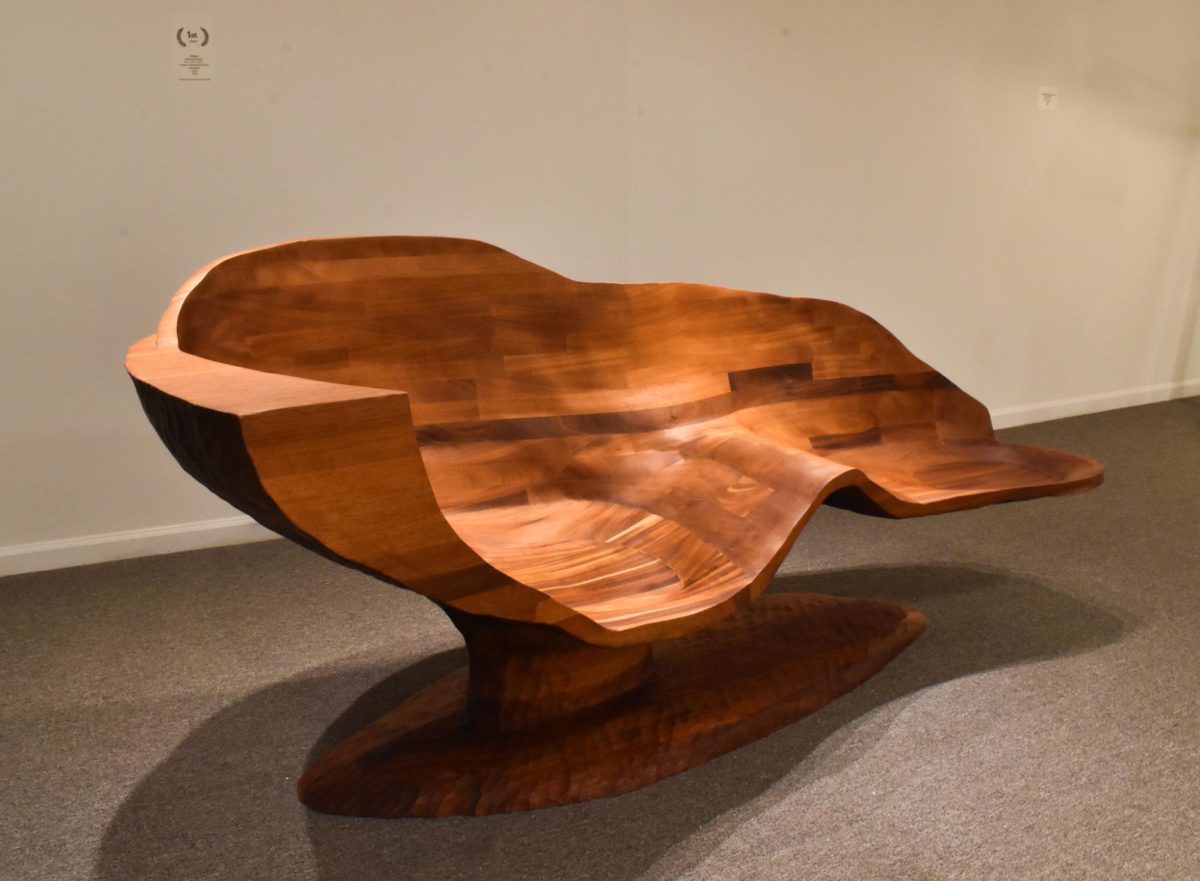Just minutes away from GovState is Union Street Gallery in Chicago Heights. Union Street is a historic, three-story building at 1527 Otto Blvd. that hosts around 10 curated exhibitions each year. The gallery supports community and local artists through open calls for exhibitions, studio space for rent, and art classes.
Union Street Gallery is a creative pillar in the South Suburbs of Chicago. This is no small task; it takes a village—a village of passionate artists and educators who have a stake in the success of the gallery. It takes generous support from volunteers and donors who understand the important role that art and creativity play in personal development and the enrichment of a community. It also takes creative calls to action from Union Street’s board to encourage support.
Two such calls were the “Night Golf” Fundraiser that took place Sept. 6 at Chicago Heights West Course and the Wine Fundraiser, a sales with Thousand Islands Winery which runs until October 2024. Proceeds from events like these directly contribute to Union Street’s mission of fostering a diverse arts survey and education to Chicago’s Southland.
Contributions from sponsors, donors and volunteers help Union Street have a very active exhibition schedule. Currently on view until Oct. 5 is the fiber art exhibition “Transparency.” The exhibition is interactive as guests are encouraged to add their creative touch to complete a fiber-embellished dome in the gallery’s main space.
“Designed to Dwell,” a unique exhibition experience in which all of the pieces were three-dimensional works of furniture closed on Aug. 31 with a reception and artists’ talk.
Such talks allow artists to connect with their audiences in a setting that is very different from that of an opening reception. This panel was conducted by artist and gallery board member Dorita Fuller, joined by four of the artists. One of whom was GovState alum Dominique Maclean, BFA. Another GovState alum, Hannah Mobely, MFA, was awarded Third Place for her remarkable work “Tiny Cabinets.”
The panel was an intimate set. They were seated in front of Maclean’s piece “Temptations of Traditions” and faced an audience of 15 people. Artists Samuel Bennett, Katherine Schwalbe, Alejandra M. and Maclean were asked a handful of introspective questions about their artwork, process and experience.
Bennett, who was awarded First Place for his piece “Chaise,” a chaise chair in laminated African mahogany, only recently made a switch to producing furniture. He added that with his background in architecture, what now intrigues him is the physical connection when dealing in sculpture. While functional, “Chaise” has a high sculptural quality. Visitors were encouraged to sit on the piece but even I did so with trepidation. This questioning of the piece adds a dynamic layer to what is already a grand and aesthetically pleasing artwork.
Other highlights of the show were Honorable Mention “Belt Seat” by Kate Ronan. From a distance, the piece looks like a semi-interesting leather chair. Upon further inspection, Ronan’s piece takes a different tone. The viewer sees that the chair was woven together with many belts in various shades of brown and black. One audience member added how they thought of all the different lives that the belts lived and how interesting it is that they have converged in this way.
The intention of this exhibition and of this artist talk can be summed up best by GovState Senior Anthropology and Sociology major Naiza Limon’s take on their experience. She said that she connected to the piece “Que quieres tomar?” which translates to “What do you want to drink?” The piece by Andres Dominguez-Fernandez features eight ceramic mugs on floating shelves on the gallery wall.
Naiza said that the piece brought them back to their Hispanic roots. They recalled being asked that same question by family members as a youth, reminiscing on time spent with family.
“Designed to Dwell” was all about exhibiting pieces that contextualize spaces where our lives happen. Naiza was happy to connect with Andres, a stranger, through this shared experience and appreciated the sharing, the vulnerability that is involved in a display like this. As stated by the gallery, the show “highlights how artistry and functionality merge to transform everyday living spaces into realms of aesthetic delight and introduce themes of both practical and impractical comfort and discomfort.”
Experiences like this artist panel are what makes Union Street Gallery such a vital space for not only for the South Suburbs but beyond.
For more information on upcoming events at Union Street or how you can get involved via donations or volunteer work, visit their website www.unionstreetgallery.org.

